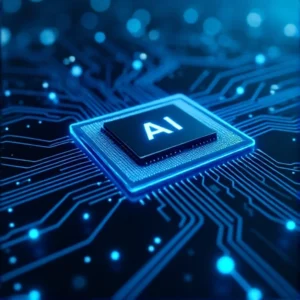Machine Learning vs. Deep Learning: What’s the Difference?

Artificial intelligence (AI) has become a hot topic, powering innovations across industries. Within the AI spectrum, machine learning (ML) and deep learning (DL) stand out as two transformative technologies. But what sets them apart? This comprehensive guide explores their definitions, differences, applications, and how they shape the future of AI.
Table of Contents
Table of Contents
- Introduction to AI, Machine Learning, and Deep Learning
- What Is Machine Learning?
- What Is Deep Learning?
- Key Differences Between Machine Learning and Deep Learning
- Advantages and Limitations of Each Approach
- Real-World Applications of Machine Learning vs. Deep Learning
- Choosing the Right Approach: Factors to Consider
- The Future of Machine Learning and Deep Learning
- Conclusion
Introduction to AI, Machine Learning, and Deep Learning
Artificial intelligence serves as the umbrella term for technologies that enable machines to mimic human intelligence. Among these, machine learning and deep learning are crucial subsets.
- Machine Learning involves teaching computers to learn patterns and make decisions based on data.
- Deep Learning, a subset of ML, mimics the human brain’s neural networks to process complex patterns and perform more sophisticated tasks.
Understanding their differences is essential for businesses and professionals aiming to harness AI effectively.
What Is Machine Learning?
Machine learning is a method of data analysis that automates the creation of analytical models.
Key Features of Machine Learning:
- Relies on structured data.
- Uses algorithms like decision trees, support vector machines, and random forests.
- Requires feature engineering, where human experts select the most relevant data attributes.
- Models improve over time with more data.
Types of Machine Learning:
- Supervised Learning: Models are trained on labeled data.
- Example: Spam email detection.
- Unsupervised Learning: Models find patterns in unlabeled data.
- Example: Customer segmentation.
- Reinforcement Learning: Models learn by trial and error to achieve a goal.
- Example: Training robots for automated tasks.
What Is Deep Learning?
Deep learning is an advanced form of machine learning that uses neural networks with multiple layers, enabling machines to process unstructured data like images, videos, and text.
Key Features of Deep Learning:
- Works with large datasets and high computational power.
- Automatically extracts features from data without human intervention.
- Uses architectures like convolutional neural networks (CNNs) and recurrent neural networks (RNNs).
How Neural Networks Work:
Neural networks consist of layers of nodes (neurons) that process input data and pass it through to subsequent layers. Each layer extracts deeper, more abstract features of the data.
Key Differences Between Machine Learning and Deep Learning
| Aspect | Machine Learning | Deep Learning |
|---|---|---|
| Data Requirements | Works with smaller datasets. | Requires large datasets to perform well. |
| Feature Engineering | Requires manual feature selection. | Automatically extracts features. |
| Computation | Less computationally intensive. | Needs high-end GPUs and significant power. |
| Complexity | Suitable for simpler tasks. | Handles highly complex problems. |
| Applications | Fraud detection, predictive analytics. | Image recognition, natural language processing. |
Advantages and Limitations of Each Approach
Advantages of Machine Learning:
- Effective for small to medium datasets.
- Easier to interpret and debug.
- Requires less computational power.
Limitations of Machine Learning:
- Struggles with unstructured data like images or videos.
- Performance plateaus as problem complexity increases.
Advantages of Deep Learning:
- Excels at processing unstructured data.
- Delivers state-of-the-art results in image recognition, speech synthesis, and more.
- Eliminates the need for manual feature engineering.
Limitations of Deep Learning:
- Data-hungry and computationally expensive.
- Harder to interpret due to its “black box” nature.
Real-World Applications of Machine Learning vs. Deep Learning
Machine Learning Applications:
- Email Filtering: Classifies emails as spam or non-spam.
- Customer Retention: Predicts churn rates using historical data.
- Predictive Maintenance: Anticipates equipment failures in industrial settings.
Deep Learning Applications:
- Autonomous Vehicles: Analyzes real-time data from cameras and sensors.
- Healthcare Diagnostics: Identifies diseases like cancer from medical images.
- Voice Assistants: Powers systems like Siri and Alexa.
Choosing the Right Approach: Factors to Consider
Data Availability:
- Use ML for smaller datasets; opt for DL if you have abundant data.
Task Complexity:
- ML is sufficient for straightforward predictive tasks.
- DL is ideal for complex tasks like language translation or image classification.
Resources:
- ML requires less computational power, making it cost-effective.
- DL needs specialized hardware like GPUs and high memory.
Interpretability:
- Choose ML when interpretability is critical (e.g., finance, healthcare).
The Future of Machine Learning and Deep Learning
Machine Learning Trends:
- Enhanced algorithms for small data scenarios.
- Integration with edge computing for real-time analytics.
Deep Learning Trends:
- Growing adoption in creative industries like art and music.
- Advances in explainable AI (XAI) to make deep learning models more interpretable.
Both technologies are converging with advancements in hybrid models that combine the simplicity of ML with the power of DL.
Conclusion
While machine learning and deep learning share the same AI foundation, they differ significantly in complexity, data requirements, and applications. Machine learning is ideal for tasks with structured data and limited resources, while deep learning excels at solving complex problems involving unstructured data.
Understanding these differences helps businesses and professionals choose the right approach for their needs. As AI continues to evolve, both ML and DL will play critical roles in shaping our technological future.
